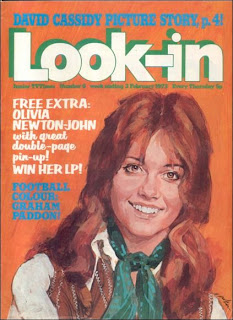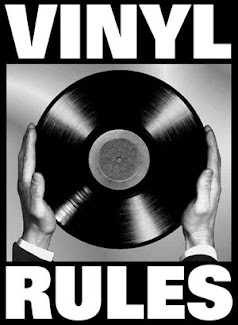Taken from “The Glory of Glam” Radio 2 2010, presented by Gary Kemp.
Glam was glorious. Brought on by rock's self indulgent pretensions in 1970 when psychedelia and prog rock were at their peak, glam brought a satin and sequin-fuelled return to the frivolous basics of rock 'n' roll and created the biggest, brightest, shiniest beast the music business had seen.
In the first programme, The Birth of Glam, Gary looks at the fascinating relationship between Marc Bolan and David Bowie and considers how it helped fuel the flamboyant creation of glam. As Angie Bowie says: "David and Marc liked each other very much and at certain times were great friends, but they were also bitter rivals."
Both Marc and David had spent the 60's as itinerant musicians, drifting through a succession of image changes whilst searching for pop stardom. In the mid 60s they were mods, then hippies, as they experimented with a variety of styles in search of their own musical niche.
Inspired by Syd Barrett's early work with Pink Floyd, and assisted by the producer/engineer Tony Visconti, Marc and David began incorporating fantasy and theatrics into their live and recorded work. In 1970, following a night spent at Eric Clapton's house watching him play guitar, Marc ditched the acoustic guitar, which he'd used for four albums worth of hippie folk with Tyrannosaurus Rex, and plugged in a brand new Fender Stratocaster.
On July 1, 1970 he recorded a startling 2 minute piece of perfect pop that re-launched the single as a work of art in electrifying fashion. Ride a White Swan, released by the newly abbreviated T-Rex, quickly peaked at No 2 on the charts.
Inspired by his first taste of major pop success Marc began a short but explosive era of chart domination that included the singles Hot Love, Get It On, Jeepster, Telegram Sam, Metal Guru, Children of The Revolution, Solid Gold Easy Action, 20th Century Boy and the albums Electric Warrior, The Slider and Tanx .
In support of their hit singles and albums, Bolan and T-Rex toured constantly and flounced on to stages around the world in ever more flamboyant costumes of sequins and satins, all propped up on impossibly high platform boots, as the glam craze they helped create became incredibly popular.
While Marc was incorporating electric guitar into his music, and sourcing outrageous costumes from trendy boutiques, he was a regular visitor to David Bowie's home in Beckenham, Kent. Haddon Hall had become a musician's commune which one visitor compared to "Dracula's living room".
With various members of his band and their accompanying girlfriends, wives and boyfriends as housemates, David wrote and rehearsed songs for the album The Man Who Sold The World, which Tony Visconti began recording once he'd competed work on the album T-Rex.
Inspired by Andy Warhol and American bands like the New York Dolls and Velvet Underground, David's new album had a tougher edge to it and encouraged by his new wife Angie he began experimenting with new androgynous outfits and was photographed for the album cover wearing what he called a "man dress".
For the follow up album Hunky Dory, David channelled Greta Garbo for the cover and with songs like Changes and Oh You Pretty Things he re-inforced the bi-sexual persona he was promoting on stage. The album also included Life on Mars, a precursor to the next persona unleashed on the world in June 1972, with the release of The Rise and Fall of Ziggy Stardust and The Spiders From Mars.
Over an 18 month period Ziggy became the epitome of glam. Released the same month as T-Rex released The Slider album, and Roxy Music released their debut self titled LP, the Ziggy Stardust album became a benchmark by which all other glam albums were judged.
With Marc, David and Roxy Music all dominating the charts in late 1972 and 1973, several rock bands who had been carving out solid but unspectacular careers for several years, also decided to add satin and sequins to their stage outfits and suddenly The Sweet, Slade, Mud, Wizzard, Gary Glitter and Alvin Stardust were among the bands that rode the crest of the wave.
Contributors include David Bowie, Tony Visconti, Bryan Ferry, Phil Manzanera, Noddy Holder, Mike Chapman, Rick Wakeman, Angie Bowie, Steve Harley, Antony Price, Mick Rock, Iggy Pop and archive interviews with Marc Bolan.
In Dressed To Kill, the second part of The Glory of Glam, Gary Kemp highlights the most successful acts of the glam era and discovers why their influence is still being heard in many of today's new bands.
In the summer of 1972, as T-Rex released The Slider and David Bowie released The Rise and Fall of Ziggy Stardust and The Spiders From Mars, Roxy Music released their debut self-titled album and began touring their own version of glamorous art-influenced rock'n'roll. With stunning outfits created by designer Antony Price, Roxy became as influential as Marc and David.
In fact Roxy Music and The Spiders From Mars shared the bill at several venues in 1972, playing to small audiences who according to Phil Manzanera "weren't quite sure what they were seeing with all that glitz and glam."
Inspired by the chart success that glam artists were achieving, several rock bands who had been carving out solid but unspectacular careers for years, also decided to add satin and sequins to their stage outfits and suddenly The Sweet, Slade, Mud, Wizzard, Gary Glitter and Alvin Stardust were among those enjoying chart success.
Along with 10CC, Sparks, Mott The Hoople, Kiss, Alice Cooper, Queen, Cockney Rebel, and even Suzi Quatro, who enjoyed chart success with the help of a bit of additional glitter. Even major acts like Rod Stewart, The Rolling Stones and Elton John dabbled in a bit of sparkly make-up.
As Angie Bowie recalls, "thanks to David and Marc they all realised that girls like pretty boys".
 |
| Not really a pretty boy. |
Contributors include John Lydon, Alice Cooper, Gene Simmons, Steve Harley, David Bowie, Tony Visconti, Bryan Ferry, Boz Boorer, Pete Phipps, Noddy Holder, Roger Taylor, Marc Almond, Paolo Hewitt, Storm Thorgerson, Antony Price, Phil Manzanera, Mike Chapman, Rick Wakeman, Angie Bowie, Mick Rock, Suzi Quatro, Iggy Pop and archive interviews with Marc Bolan.



































.jpg)























